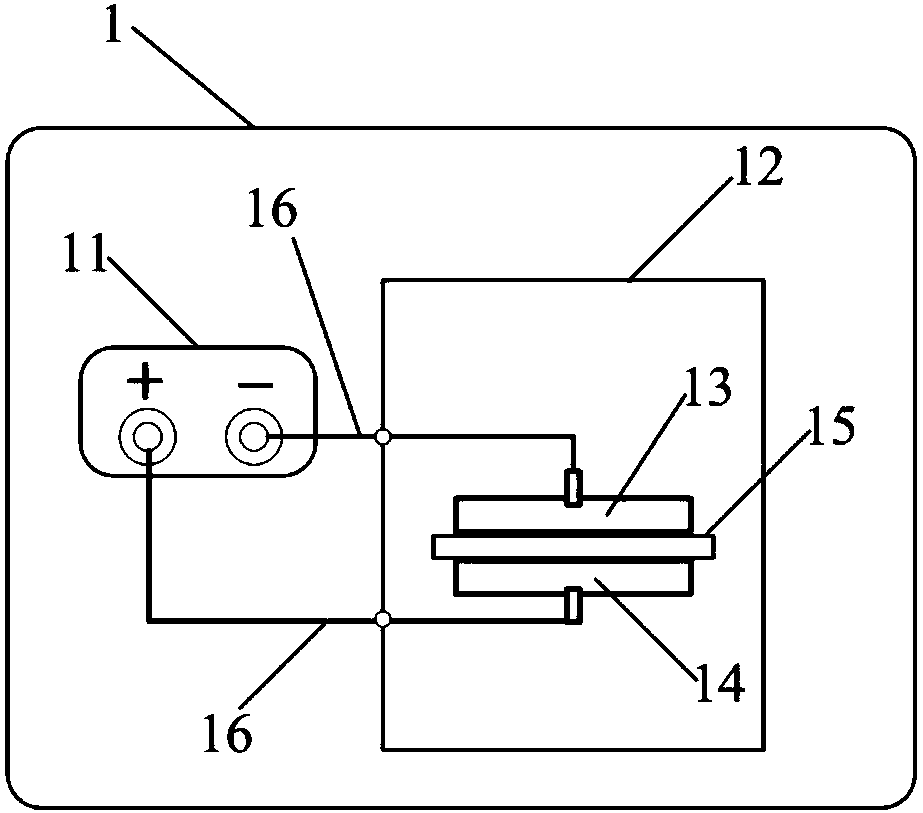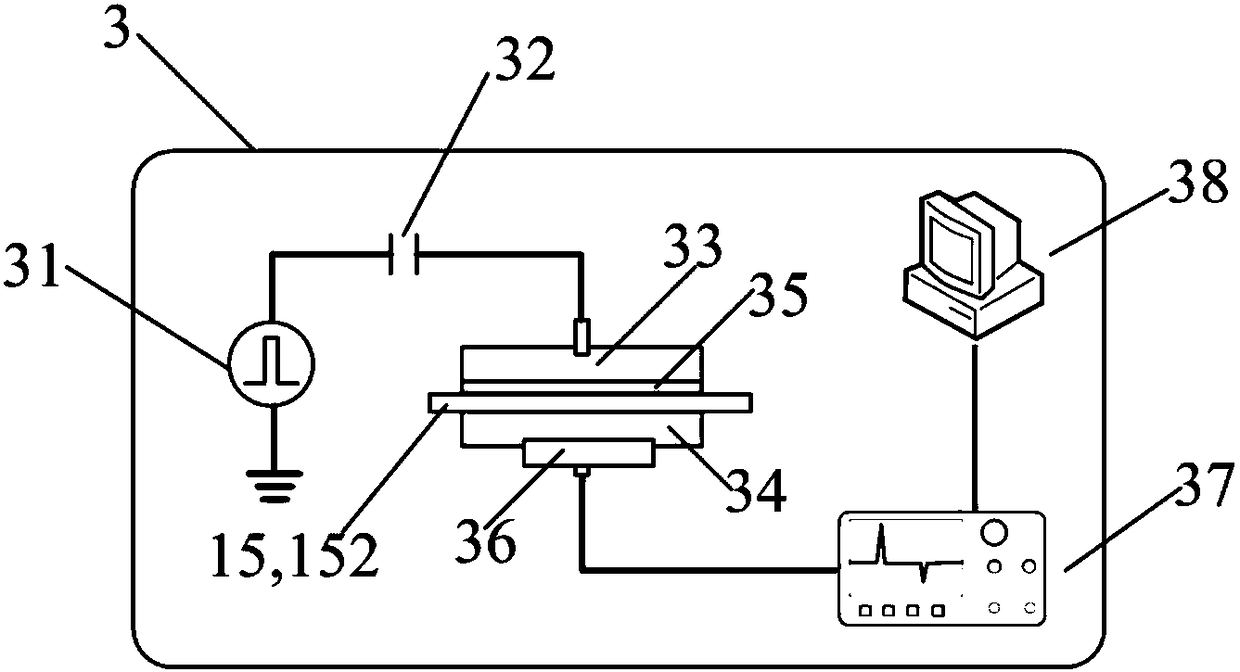Method for characterizing space charge accumulation in insulating medium
A technology of internal space and charge accumulation, applied in the direction of measuring electrical variables, measuring devices, instruments, etc.
- Summary
- Abstract
- Description
- Claims
- Application Information
AI Technical Summary
Problems solved by technology
Method used
Image
Examples
Embodiment 1
[0073] 1. Target: Low-density polyethylene with a thickness of 0.3mm (in this implementation, the density is 0.94g / cm 3 ) The amount of charge after 30min of polarization.
[0074] 1.1 Polarization treatment: place the first sample 151 with a thickness of 0.3mm between the first upper electrode 13 and the first lower electrode 14, set the voltage of the high-voltage DC source 11 to 9kV, and set the high and low temperature alternating control box 12 The temperature is 50°C. After the temperature reaches the set temperature and stabilizes for 2 hours, the first upper electrode 13 and the first lower electrode 14 are connected to the high-voltage DC source 11, and the first sample 151 is polarized for 30 minutes.
[0075] It is worth noting that when different polarization times are selected, the amount of charge accumulation inside the test material is different. This example studies the situation of polarization for 30 minutes; in actual experiments, the polarization time can ...
Embodiment 2
[0079] 1. The objective is the same as in Example 1, that is, to measure the electric charge of low-density polyethylene with a thickness of 0.3 mm after polarization for 30 minutes under the conditions of a polarization temperature of 50° C. and a field strength of 30 kV / mm.
[0080] 1.1 Polarization treatment: The same second sample 152 as in Example 1 was subjected to polarization treatment under the same conditions as in Example 1.
[0081] 1.2 Depolarization treatment: take out the second sample 152 polarized in step 1.1 and cooled to room temperature with insulating clips, and place it between the semiconductive layer 35 and the third lower electrode 34 of the space charge test system 3; The voltage of the pulse source 31 is set to 200V and the pulse width is 10ns by the second control unit 38, and the decay time is set to be 60min; the pulse source 31 is turned on for depolarization processing, and the second test object 152 internal charge is measured by the piezoelectr...
Embodiment 3
[0083] In this embodiment, embodiment 1 and embodiment 2 are combined into one embodiment, and Q1 and Q2 obtained in embodiment 1 and embodiment 2 are mutually verified, and it can be known that the order of magnitude of the charge Q of test sample 15 is 10 -8 C; thus, it can be seen that the space charge characterization method proposed in this application is effective, and the characterization method is reliable.
PUM
 Login to View More
Login to View More Abstract
Description
Claims
Application Information
 Login to View More
Login to View More - R&D
- Intellectual Property
- Life Sciences
- Materials
- Tech Scout
- Unparalleled Data Quality
- Higher Quality Content
- 60% Fewer Hallucinations
Browse by: Latest US Patents, China's latest patents, Technical Efficacy Thesaurus, Application Domain, Technology Topic, Popular Technical Reports.
© 2025 PatSnap. All rights reserved.Legal|Privacy policy|Modern Slavery Act Transparency Statement|Sitemap|About US| Contact US: help@patsnap.com



